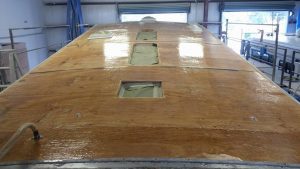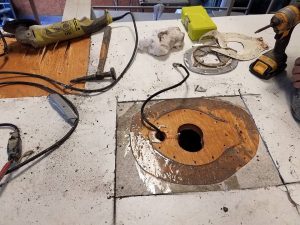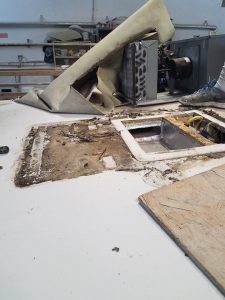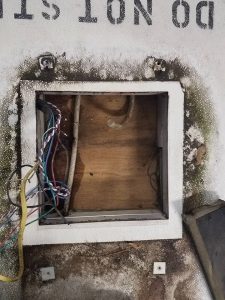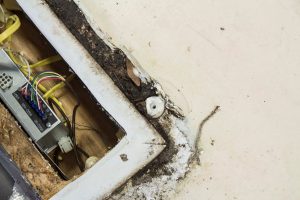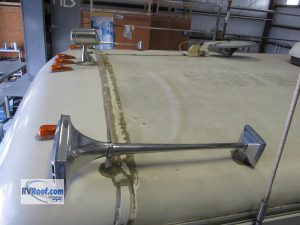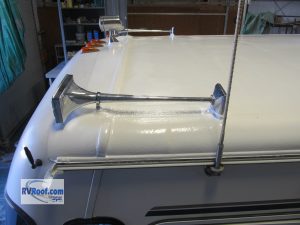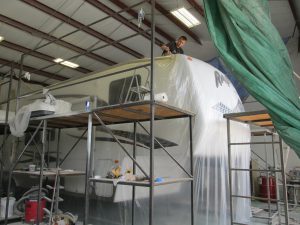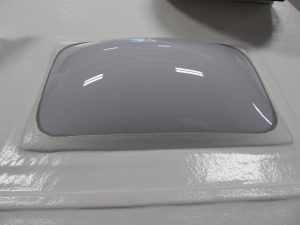RV Roof’s FlexArmor is Paving the Way for Expansion
In an RV, rot and mold can linger above an RVer like a dark cloud overhead. With it, unforeseen dangers like respiratory issues or the ceiling caving in.
But in 2005, industrial chemical sprayer David Adair came across an opportunity that would lead to a patented material called FlexArmor which would grant a lifetime-guaranteed protection to RVers from leaky ceilings.
Before the inception of Green Cove Springs, Fla.-based RV Roof, David had about 30 years’ experience doing industrial coatings for truck bed liners, gymnasium floors, and jail showers. David “kinda fell into it,” said wife and co-owner Jennifer Adair.
“Someone came into his office wanting something else done,” said Jennifer. The man saw one of the flexible materials David was spraying for industrial applications and asked him if it would work on an RV roof.
After patching it up, the man recommended David look into RVs, as roof damage and are all too frequent.
Scroll down for images of water-damaged RV roofs, as well as before and after photos of FlexArmor.
“That led to a journey of creating our own product and system,” said Jennifer. “We started learning how (RVs) are built.”
They found that parts of an RV roof aren’t entirely waterproof. The problem lies within the caulking joints, which may lead to leaking since caulk can dry out in the sun.
“Some of these things are built to fail,” said Jennifer. “Anyone with common sense would look at it and say, ‘That’s going to leak.’ ”
According to her, the caulking needs replacement every one to two years.
Damage is also common with flat RV roofs or anything with a dipping contour. As water accumulates, it seeps through the caulking over time.
“No matter what kind of roof material an RVer has, these caulking joints is where 99 percent of their problems happen,” said Jennifer. “By the time they notice it, they’ve got significant damage.”
That’s why the first thing RV Roof does in servicing is to strip away those caulking joints after detaching the solar panels, A/C, and whatever else may be secured to potentially rotted areas.
“We make a totally seamless roof that water can’t go through,” she said. “You can make a swimming pool out of our roofing material.”
When applied to the roof, FlexArmor is about three-sixteenths of an inch thick, and made tough to stave off, for instance, hole punctures at campsites from low-hanging trees.
By 2009, RV Roof was gaining steadfast attention.
“It was at that point where through just word of mouth, everything started to click and grow faster,” said Jennifer.
RV Roof gets customers coming from Canada, as well as requests from people in England, Germany, and Australia. Generally, it is industry types coming in overseas for trade shows and stopping by an RV Roof establishment. The hope is to one day cross the pond.
One customer drove from the northernmost point of Washington state to the Fort Myers, Fla., location.
Currently, RV Roof has two dealerships that are authorized applicators for the roof system, offering it as an addition for new or used RVs. North Trail RV in Fort Myers, and Demontrond RV in Houston, Texas.
As for a possible third state presence, the Adairs are eying northern California or Indiana to be more central.
“We’d like to see a minimum of one per state,” she said. With three in Texas and three in Florida servicing up to two RVs a week it might be plausible.
